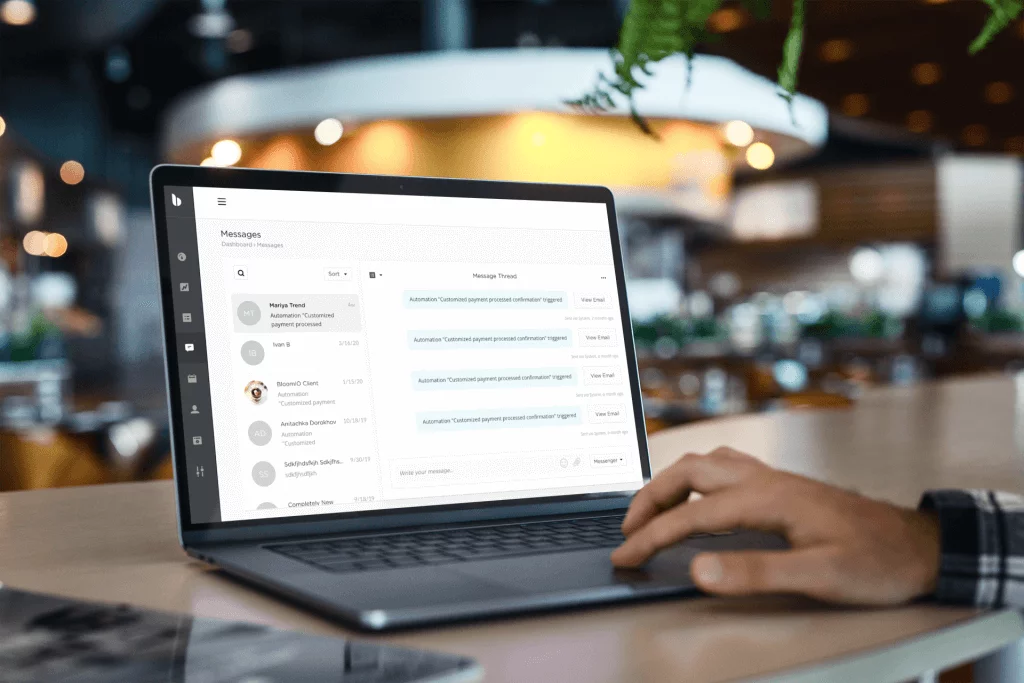Most of your jobs as a freelance artist are likely based on client commissions. It can be hard to design and stick to a budget when those commissions aren’t consistent.
Freelance artist jobs go through seasons of abundance and periods of lack. You may be swimming in a backlog of waiting clients one month, and have too much time on your hands the next.
Art is also a creative endeavor. You don’t want to feel rushed when you are producing a commissioned piece, but the financial end of your business can’t be ignored, either.
You’re your own boss, with all the perks and responsibilities that come with that role.
To that end, it’s important that you find a system to manage your commissions and other financial aspects of your work. By developing an organized solution to this necessary part of freelancing, you can focus on your creativity instead of your bills.
Managing commissions and all of the interrelated pieces that come with being a freelance artist is possible.
You’ll learn to set up your financial end with these tips:
1. Start By Getting the Project Details
2. Know Your Prices
3. Have a Contract Ready
4. Keep Your Client Correspondence Organized
5. Streamline Your Payment System
1. Start By Getting the Project Details
A freelance artist should understand exactly what the client wants before work begins.
Vague expectations where the client says, “you’re in charge” usually don’t turn out well. On the other side of that, if they are too detailed and micromanaging, it can impact your creativity. It’s important to get a feel for the kind of client you’re dealing with before you sign a contract promising work.
Schedule a meeting to go over your portfolio and make sure you are both on the same page. Plan enough time for the meeting so that neither of you are rushed or distracted.
Your new client may be nervous or unsure of what they want in the commissioned piece. They are probably hoping you can read their mind or pull it from them through strategic questioning.
If the client seems anxious or uncertain, do what you can to make them more comfortable. Then, encourage questions and ask some yourself so there’s no confusion on either side.
To help you stay on track and not miss important concepts, make a list of crucial questions you want to cover, like:
- What do you expect from the finished piece?
- Do you have a brand or inspiration you want to be included?
- Who is the final audience for the artwork?
- Are there any elements you don’t want me to include (cultural, societal, political, etc.)
- Are there any elements that you absolutely want me to include?
These questions are open-ended, so it gives you the chance to feel out the client’s personality. Not all personalities mesh, no matter how professional you are. It’s better to know if you won’t be able to work with the person before you agree to do so.
This is also the time to go over the details in your contract and agree on a price. With the line of communication going smoothly, pricing is the next natural step.
Related: How to Prepare for Your First Meeting With a New Client
2. Know Your Prices

You should have a price index inside your portfolio.
Let the client know how much you expect for a certain type of piece and what factors can influence that price.
If you’re not sure what to charge, there are expert pricing sites for freelance artists in the United States to guide you. Don’t undersell yourself — the average freelance artist salary in the U.S. is over $50,000 a year and can reach close to six figures.
An efficient, professional way to discuss pricing is to have a portfolio with tentative costs already visible on your website. If you’re using the Bloom.io CRM, you can use the website builder to create your online portfolio or use a Bloom code snippet on your existing WordPress website.
It can be hidden to the public eye, only accessed by you when you’re showing it to a client. Or it can be available to interested prospects so they can base their wants on a price point before meeting with you.
Add a price range on each picture as part of your regular meeting process. You can recommend that the client visits your site before your meeting so everyone knows what to expect, or wait and pull out your portfolio when you are face-to-face with them.
Take some time to plan your prices carefully. Many freelancers are tempted to undercharge to rake in more clients, but that can backfire into being overwhelmed with work you’re unhappy doing. Make sure you’re charging the going rate!
Related: How to Transition from Part-Time Freelance to Full-Time Freelance
3. Have a Contract Ready
Avoid making new contracts over and over by creating a contract template for each type of work you offer.
Bloom’s CRM system lets you quickly turn templates into custom-made contracts and store them in easily accessible folders for each client.
Include the following in your contracts:
Specify Who’s Who and What’s What
Define the members of each party (you and the client or clients). Lay out a detailed description of what work is to be delivered.
Include a Payment Protocol
Have a predetermined payment term protocol listed in the contract. For many freelance artists, it’s usual and customary to collect half of the agreed-upon rate when the contract is signed and the other half when the work is completed.
Show How the Work Will Progress
Include a project approval process that will be referenced by both artist and client throughout the process.
Break your work down into stages and get signed approval during each stage before you continue. Be sure to include a definitive scope and a time at which the client can no longer request adjustments or addendums.
Be realistic about your timelines. Don’t promise a quick turnaround to potential clients unless you are positive you can deliver. It’s usually better to err on the side of too long rather than too soon.
Include Visual References
In each template, keep a list of references to other art pieces that you can choose from as a comparison. Pick those that are similar to the work agreed upon by you and the client to be visual references in your contract.
Include Intellectual Property Information
Also, include a section that discusses your rights as the artist so the client can’t reproduce your work or exhibit it without your permission.
4. Keep Your Client Correspondence Organized

Even before the contract is signed, the next crucial part is keeping all correspondence with that client organized. One misplaced document or message can impact your entire job.
Before you meet with another client, take some time to get your files organized, set up your web page with your portfolio and prices, and create templates for your most commonly used documents.
You may have to take pictures or scan important documentation, like your license and insurance, but it’s all part of the organization process! Once it’s done, and you’ve stored it in a reliable place, you don’t have to do it again.
You can keep everything in a file on your computer, but it helps to have one centralized program. When you use Bloom’s CRM system, you don’t have to navigate to multiple places to pull up any part of your typical meeting agenda.
Even your business card, social media info, and LinkedIn profile can be kept in your CRM so you can text or email those items with just a few clicks! This saves you money on having physical cards made, only to be handed out and thrown away by most of the recipients.
From the first time a client contacts you until their invoice is paid, how you organize the correspondence is crucial. The process looks different for every freelance artist when they begin working with new clients, but it usually contains similar steps.
You’ll start out with an initial inquiry, at which time you’ll want to take notes on what the client is feeling you out about. Then the meeting will occur, with more information given and received. Keeping track of all of the expectations is crucial.
The next step includes your proposal, with all of the essential components (like scope and pricing) inside it. By the time you get to the contract, you could have dozens of different notes and emails floating around in different places.
A CRM like Bloom lets you handle all your communication with the client in one place. Within seconds, each document, conversation, or memo is sorted and filed away for easy access later.
Related: Client Interfacing: 10 Keys to Effective Communication with Freelance Clients
5. Streamline Your Payment System
You’ve already done a lot of hard work to get where you are. You have a high-quality, commissioned work in place. You have a contract signed. Now you need a way to manage your commissions and your budget.
Artists often have the problem of getting paid for their work once it’s been completed and handed over to the client.
Using a professional invoicing system sets a professional tone that encourages the client to respect the payment process more.
Bloom is a CRM designed for creatives to let them focus on their work instead of the business side of freelancing. The invoicing portion of the system is simple to implement. Once you have your preferences in place, the actual invoicing part becomes automatic.
Bloom’s CRM includes:
- Setting up an organized workflow from your first client contact until the piece is paid for
- Creating, submitting, and following up on invoices smoothly
- Accepting and recording payments
- Tracking your business expenses
Managing your commissions shouldn’t be a full-time job. The hours you spend invoicing clients could be better used on moving forward with your artwork or spending quality time with family and friends.
An automated invoicing system cuts into the minutes that add up to hours of wasted productivity or fun. It’s a return on your investment that pays for itself.
Conclusion
Working for yourself as a freelance artist is a dream come true for those who get to do so successfully. But when it comes to managing commissions, it’s a logical, business aspect that most creatives don’t enjoy.
A freelance career requires a lot of juggling of little pieces to ensure you’ve taken care of things like self-employed taxation, documentation, and deadlines. It’s easy to miss important tasks when you own your own business.
By streamlining the process and setting up efficient workflows in a professional CRM system like Bloom, you can spend more time finding inspiration and letting your creativity flow, and less time dealing with the financial side of your work.
It’s a win/ win combination that will net you more money and less stress as you continue to build or expand your freelance business.
Try Bloom for 14 days for free!